Draw and Label
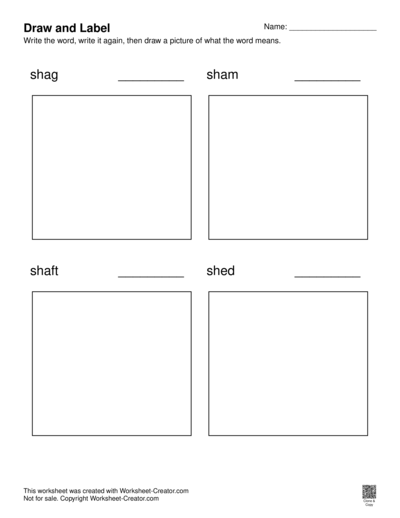
Create a worksheet with this template.
Learn about the Draw and Label strategy that students can use to enhance their vocabulary and comprehension skills.
What is Draw and Label?
Draw and Label is a versatile learning technique that encourages students to visually represent words and their meanings. This method is effective for various grade levels and can be adapted to suit different learning objectives.
Draw and Label is recommended in Words Their Way by Bear, et. al., and Orton-Gillingham based programs for students of all ages (countinerintuitively, even older students as well).
Teachers can use this method to help students reinforce their understanding of vocabulary, explore multiple word meanings, and differentiate between similar-sounding words.
How do we use the Draw and Label method to improve Spelling and teach English and Language Arts (ELA)?
Draw and Label is a method of learning vocabulary and reinforcing comprehension, where students:
- Read the word out loud
- Write the word next to the printed word
- Create a drawing that illustrates the word's meaning
Why is the Draw and Label worksheet used in schools?
Draw and label is a good activity at a variety of levels to demonstrate the meaning of words. It helps students engage with vocabulary in a more interactive and memorable way.
This method is particularly useful for:
- Illustrating multiple meanings: Words like 'bed' can be illustrated in different contexts (e.g., a place to sleep, the bottom of a river).
- Distinguishing homophones: The differences in words like 'Flour' and 'Flower' can be more easily remembered through visual representations.
- Reinforcing comprehension: By drawing and labeling, students create a strong visual memory associated with each word.
- Supporting various learning styles: This method caters to visual and kinesthetic learners.
After completing their drawings, students can use their illustrations in various sorts and activities, further reinforcing their learning.
How can I make a Draw and Label worksheet?
Worksheet Creator is a tool that allows teachers to create Draw and Label worksheets for their students.
Simply enter the words you want to include in a worksheet, choose the Draw and Label template, and download the worksheet.
You can also customize the worksheet with different font choices and other customizations.
Can I buy Draw and Label Worksheets that other teachers have created?
Yes! See our Draw and Label Worksheet Store, created by other teachers. You can customize your own based on any of these worksheets as well.
What do the different font types look like?
Here is a preview of the different font types: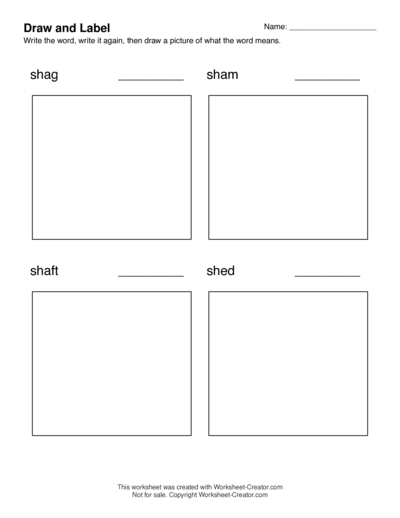
Default (unlined)
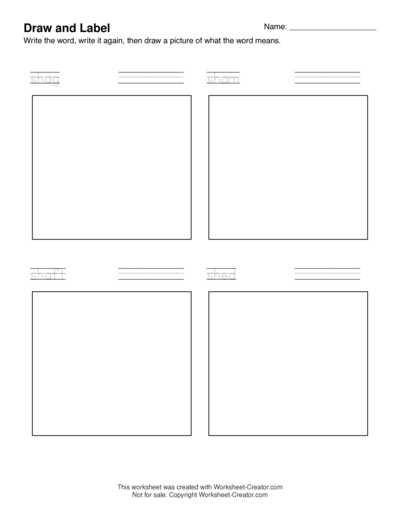
Lined with trace lines
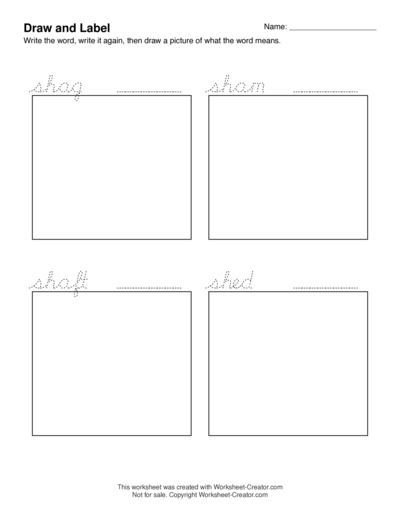
Cursive
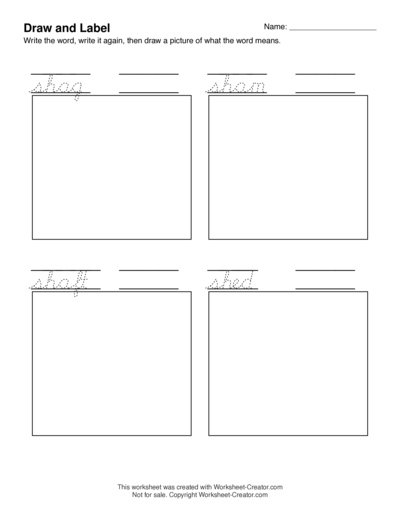
Lined with cursive trace lines
Additional activities with Draw and Label worksheets
You can also use the Draw and Label worksheet as a starting point for other activities.
- Explain and Elaborate: After drawing and labeling, students can explain their drawing to a partner or the class, detailing the function, relationships, or importance of each labeled part. This encourages deeper understanding and verbalization of concepts.
- Compare and Contrast: Provide two related draw and label worksheets. Students can then compare and contrast the drawings, highlighting similarities and differences through annotation, color-coding, or a separate written summary.
- Sequence and Order: For processes or life cycles, students can draw and label the stages, then cut out the drawings and arrange them in the correct sequence. This reinforces understanding of chronological order.
- Storytelling/Narrative: Students can create a short story or narrative incorporating the elements they have drawn and labeled. This encourages creative application of the learned vocabulary and concepts.
- "What If?" Scenarios: Pose "what if" questions related to the drawn and labeled elements. Students can then modify their drawing or add annotations to show the consequences of the change.
- Create a Quiz or Game: Students can use their draw and label worksheet as the basis for a quiz or a simple game (e.g., labeling race, matching game). This reinforces recall in a fun way.
- Add Details and Functions: Encourage students to go beyond basic labeling and add arrows, notes, or further drawings to explain the function or relationships between the labeled parts.
- Color-Coding and Highlighting: Students can use different colors to represent different categories or functions of the labeled parts. This adds another layer of visual organization.